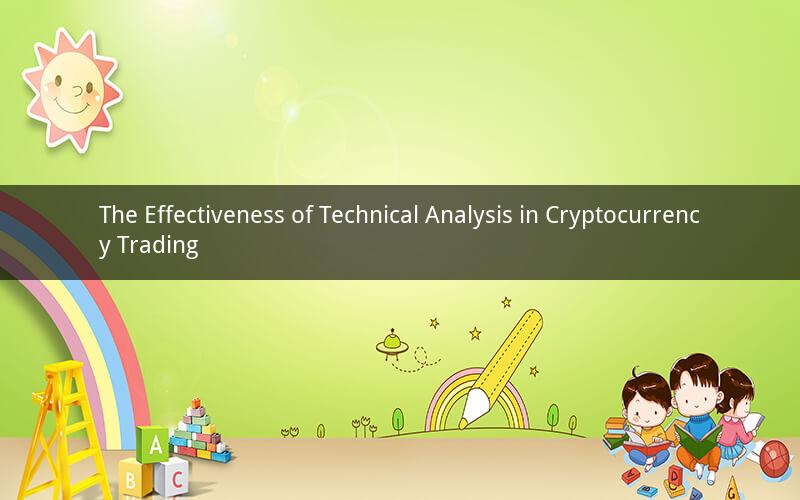
Introduction:
In the rapidly evolving world of cryptocurrency trading, investors are constantly seeking methods to gain an edge in the market. One such method is technical analysis, which involves studying historical price and volume data to identify patterns and trends. But does technical analysis work for cryptocurrency? This article delves into the intricacies of technical analysis in the cryptocurrency market and explores its effectiveness.
1. Understanding Technical Analysis:
Technical analysis is a method of evaluating assets by analyzing statistics generated by market activity, such as price movement and volume. It relies on the belief that historical price movements can predict future price movements. Traders use various tools and indicators to analyze this data, including trend lines, moving averages, oscillators, and volume analysis.
2. The Cryptocurrency Market:
The cryptocurrency market is known for its volatility and unpredictability. Unlike traditional financial markets, the cryptocurrency market is relatively new and lacks regulatory oversight. This makes it even more crucial for traders to have a reliable method to navigate the market. Technical analysis can provide insights into potential price movements and help traders make informed decisions.
3. The Effectiveness of Technical Analysis in Cryptocurrency:
a. Historical Price Patterns: Cryptocurrency markets have shown various patterns and trends over time. Technical analysis helps traders identify these patterns, such as support and resistance levels, trend lines, and chart patterns like head and shoulders or triangles. By recognizing these patterns, traders can anticipate potential price movements.
b. Volume Analysis: Volume is a crucial indicator in technical analysis. It represents the number of units of a cryptocurrency being traded within a specific time frame. High volume indicates strong interest in a cryptocurrency, while low volume suggests lack of interest. By analyzing volume, traders can identify potential buy or sell signals.
c. Moving Averages: Moving averages (MAs) are popular indicators in technical analysis. They smooth out price data over a specific period, providing a clearer picture of the market's direction. Traders use different types of MAs, such as simple moving averages (SMA) and exponential moving averages (EMA), to identify trends and potential reversals.
d. Oscillators: Oscillators are tools that measure the magnitude of price changes relative to a specific time frame. Common oscillators include the Relative Strength Index (RSI), Moving Average Convergence Divergence (MACD), and Stochastic Oscillator. These indicators help traders identify overbought or oversold conditions, indicating potential reversals.
4. Limitations of Technical Analysis in Cryptocurrency:
a. Market Manipulation: The cryptocurrency market is susceptible to manipulation, which can distort technical analysis signals. Traders should be cautious when relying solely on technical analysis in a manipulated market.
b. Rapid Market Changes: The cryptocurrency market is highly volatile, with prices fluctuating rapidly. Technical analysis may not always be effective in capturing these short-term price movements.
c. Limited Historical Data: Cryptocurrency markets are relatively new, which means historical data is limited. This can make it challenging to establish reliable patterns and trends.
5. Conclusion:
Technical analysis can be a valuable tool for cryptocurrency traders, providing insights into potential price movements and helping them make informed decisions. However, it is important to acknowledge the limitations of technical analysis, such as market manipulation and rapid market changes. Traders should combine technical analysis with other methods and exercise caution when trading in the cryptocurrency market.
Questions and Answers:
1. What is the purpose of technical analysis in cryptocurrency trading?
Technical analysis aims to identify patterns and trends in historical price and volume data to predict future price movements and make informed trading decisions.
2. Can technical analysis guarantee profits in cryptocurrency trading?
No, technical analysis cannot guarantee profits. While it can provide insights into potential price movements, it is not foolproof and involves inherent risks.
3. How can technical analysis help in identifying potential buy or sell signals?
Technical analysis uses various tools and indicators, such as trend lines, moving averages, and oscillators, to identify potential buy or sell signals based on historical price and volume data.
4. Why is volume analysis important in technical analysis?
Volume analysis helps traders identify the level of interest in a cryptocurrency. High volume indicates strong interest, while low volume suggests lack of interest. This information can help traders make informed decisions.
5. Are there any specific technical analysis tools recommended for cryptocurrency trading?
Several technical analysis tools are recommended for cryptocurrency trading, including trend lines, moving averages, oscillators, and volume analysis. However, the choice of tools may vary depending on individual trading preferences and strategies.